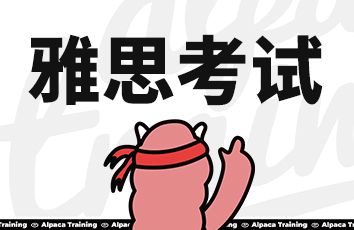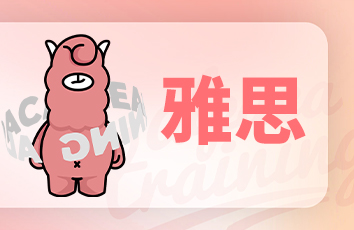剑雅19阅读Test1判断5-7题解析
剑桥雅思19收集了雅思考试的真题,其中共包括4套题目。下文羊驼小编整理了剑雅19考试题Test 1的阅读题中的判断5-7题的题目解析,供考生们在备考雅思阅读时复习参考,一起来看看吧。想要了解更多剑雅19阅读题目的考生可查看剑雅19阅读Test1判断3-4题解析和剑桥雅思19真题解析,听阅考题分析汇总。
原文第5-9段
(第5段)Racket modifications mainly date back to the 1970s,when the amateur German tennis player Werner Fischer started playing with the so-called spaghetti-strung racket.It created a string bed that generated so much topspin that it was quickly banned by the International Tennis Federation.However,within a decade or two,racket modification became a regularity.Today it is,in many ways,an aspect of the game that is equal in significance to nutrition or training.
(第6段)Modifications can be divided into two categories:those to the string bed and those to the racket frame.The former is far more common than the latter:the choice of the strings and the tension with which they are installed is something that nearly all professional players experiment with. They will continually change it depending on various factors including the court surface,climatic conditions,and game styles.Some will even change it depending on how they feel at the time.
(第7段)At one time,all tennis rackets were strung with natural gut made from the outer layer of sheep or cow intestines.This all changed in the early 1990s with the development of synthetic strings that were cheaper and more durable.They are made from three materials:nylon(relatively durable and affordable),Kevlar(too stiff to be used alone)or co-polyester(polyester combined with additives that enhance its performance).Even so,many professional players continue to use a'hybrid set-up',where a combination of both synthetic and natural strings are used.
(第8段)Of the synthetics,co-polyester is by far the most widely used.It's a perfect fit for the style of tennis now played,where players tend to battle it out from the back of the court rather than coming to the net.Studies indicate that the average spin from a co-polyester string is 25%greater than that from natural string or other synthetics.In a sense,the development of co-polyester strings has revolutionised the game.
(第9段)However,many players go beyond these basic adjustments to the strings and make changes to the racket frame itself.For example,much of the serving power of US professional player Pete Sampras was attributed to the addition of four to five lead weights onto his rackets,and today many professionals have the weight adjusted during the manufacturing process.
题目
5.Werner Fischer played with a spaghetti-strung racket that he designed himsele.
6.The wealther can affect how professional players adjust the strings on their rackets.
7.It was believed that the change Pete Sampras made to his rackets contributed to his strong serve.
解析
第 5 题:
出题位置:第五段全段
题干:Werner Fischer played with a spaghetti-strung racket that he designed himself.
翻译:Werner Fischer 使用他自己设计的 spaghetti-strung 球拍。
解析:根据 Werner Fischer 这个名字定位到该段落,这一段没有涉及“designed himself(自己设计)”的表达。
答案:NOT GIVEN
第 6 题:
出题位置:第六段 They will continually change it depending on various factors including the court surface, climatic conditions, and game styles.
题干:The weather can affect how professional players adjust the strings on their rackets.
翻译:天气可以影响运动员如何调整球拍上的线。
解析:这道题没有明显的定位词,尽管有 professional players,但是该词在全文出现次数比较多,可以按照顺序出题原则,看上一题出题段的下一段,再结合 professional players 才能肯定出题位置在这里。第六段最后一句提到 climatic conditions,球员会持续改变球拍,根据场地、天气和比赛类型而调整,与题干表述一致。
答案:TRUE
第 7 题:
出题位置:第九段 For example, much of the serving power of US professional player Pete Sampras was attributed to the addition of four to five lead weights onto his rackets, and today many professionals have the weight adjusted during the manufacturing process.
题干:It was believed that the change Pete Sampras made to his rackets contributed to his strong serve.
翻译:人们说 Pete Sampras 对球拍的调整有利于他发球力度更大。
解析:根据 Pete Sampras 这个人名定位到该段落,其中又说到,美国专业运动员Pete Sampras 的大部分发球力量都得益于球拍中额外的 4-5 个铅块,与题干表述一致。
答案:TRUE




